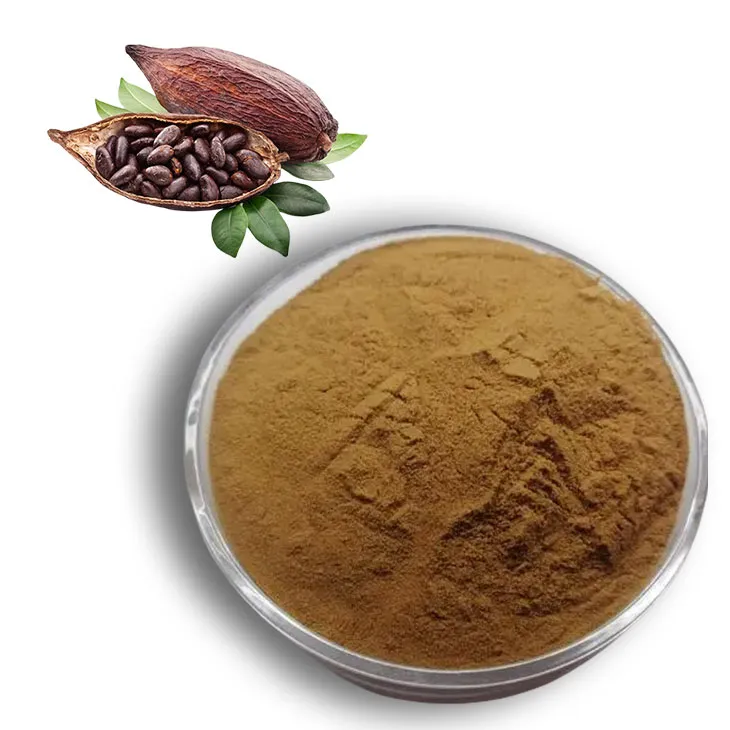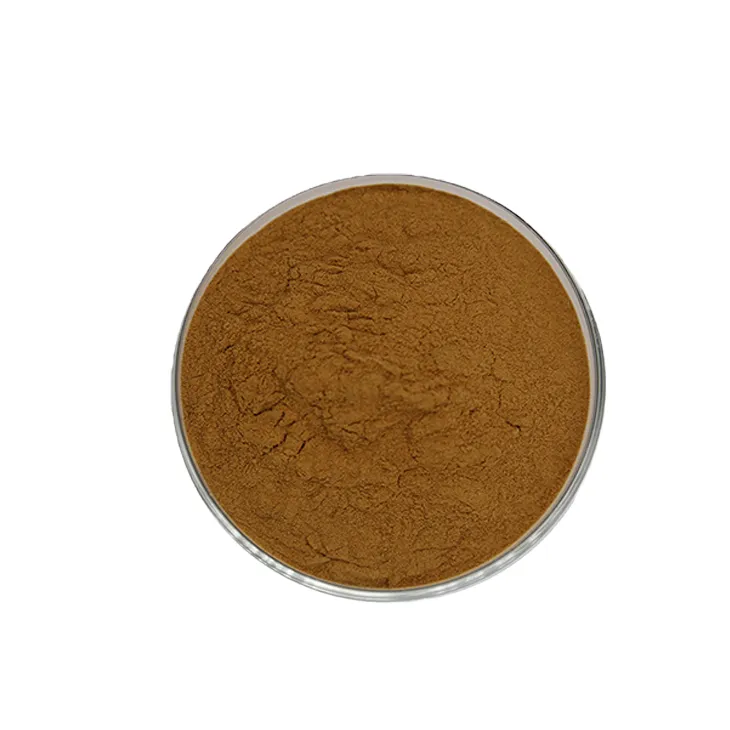- 0086-571-85302990
- sales@greenskybio.com
How to make powder with cocoa extract.
2024-11-29

1. Introduction
Cocoa Extract is a rich source of various beneficial compounds, and converting it into powder form can expand its applications in different industries. This article will take you through the entire process, from the raw cocoa preparation to the final powder product, as well as exploring its potential uses.

2. Initial Preparation of Cocoa for Extraction
2.1 Selection of Cocoa Beans
The first step in making Cocoa Extract powder is to carefully select high - quality cocoa beans. High - quality beans are crucial as they determine the flavor, aroma, and nutritional content of the final product. Look for beans that are free from mold, pests, and any signs of damage. There are different varieties of cocoa beans, such as Forastero, Criollo, and Trinitario, each with their own unique characteristics. Forastero beans are the most common and are known for their strong flavor, while Criollo beans are rarer and have a more delicate and complex flavor profile.
2.2 Roasting of Cocoa Beans
After selection, the cocoa beans need to be roasted. Roasting is a crucial step as it helps to develop the characteristic chocolate flavor and aroma. The roasting process also affects the chemical composition of the beans. During roasting, the temperature and duration need to be carefully controlled. Generally, the roasting temperature can range from 120°C to 150°C, and the duration can be from 15 minutes to 30 minutes depending on the type of beans and the desired flavor. As the beans are roasted, a series of chemical reactions occur. The Maillard reaction, for example, between the amino acids and reducing sugars in the beans, contributes to the formation of the complex flavor and color compounds.
2.3 Shell Removal
Once the beans are roasted, the next step is to remove the shells. This can be done using a winnowing machine. The shell removal process is important as the shells can impart a bitter taste to the final product if not removed. After shell removal, what remains are the cocoa nibs, which are the essence of the cocoa and are rich in cocoa butter and cocoa solids.

3. The Extraction Process
3.1 Solvent Extraction
One common method of extracting Cocoa Extract from the nibs is solvent extraction. In this method, a suitable solvent is used to dissolve the desired compounds from the nibs. Organic solvents such as ethanol or ethyl acetate are often used. The solvent extraction process involves mixing the nibs with the solvent in a ratio that is optimized for maximum extraction. The mixture is then stirred for a certain period, usually several hours, to ensure complete extraction. After extraction, the solvent - cocoa extract mixture is filtered to separate the liquid extract from the solid residue.
3.2 Press Extraction
Another method is press extraction. This method takes advantage of the natural pressure to extract the cocoa butter and other substances from the nibs. The cocoa nibs are placed in a press, and pressure is applied. As the pressure is applied, the cocoa butter is squeezed out, leaving behind a cake that is rich in cocoa solids. This cake can then be further processed to obtain the cocoa extract. Press extraction is a more mechanical and "natural" method compared to solvent extraction, but it may not be as efficient in extracting all the desired compounds.

4. Chemical and Physical Changes during the Transformation to Powder
4.1 Evaporation of Solvent (if solvent - based extraction)
If solvent extraction was used, the next step is to remove the solvent to obtain a more concentrated cocoa extract. This is typically done through evaporation. The evaporation process needs to be carefully controlled to avoid over - heating the extract, which could cause degradation of the valuable compounds. Low - pressure evaporation or vacuum evaporation can be used to reduce the boiling point of the solvent and speed up the evaporation process while minimizing heat damage.
4.2 Drying
After obtaining a concentrated cocoa extract, the extract needs to be dried to convert it into powder form. There are different drying methods available. Spray drying is a popular method in the food industry. In spray drying, the concentrated extract is sprayed into a hot air chamber. As the droplets of the extract come into contact with the hot air, the water is quickly evaporated, leaving behind fine powder particles. Another method is freeze - drying, which is more suitable for heat - sensitive compounds. In freeze - drying, the extract is first frozen, and then the water is removed through sublimation under low - pressure conditions. The drying process not only removes the water but also causes changes in the physical structure of the extract. The powder particles formed have a large surface area, which can affect its solubility and dispersibility.
4.3 Grinding
Once the extract is dried, it may need to be ground to achieve a finer powder texture. The grinding process can be done using a grinder or a mill. The fineness of the powder can be adjusted according to the specific requirements. A finer powder may be more suitable for applications where better solubility or mixing is required, such as in the cosmetic or pharmaceutical industries.

5. Potential Uses of Cocoa Extract Powder
5.1 In the Food Industry
Cocoa extract powder has a wide range of uses in the food industry. It can be used as a flavoring agent in various products such as cakes, cookies, ice creams, and chocolates. It adds a rich chocolate flavor and aroma. In addition, due to its antioxidant properties, it can also be used as a natural preservative. Cocoa extract powder can also be added to functional foods, such as energy bars or health supplements, as it contains beneficial compounds like flavonoids that are associated with various health benefits, including heart health improvement and antioxidant activity.
5.2 In the Cosmetic Industry
The cosmetic industry also makes use of cocoa extract powder. It can be included in skin - care products such as face masks, creams, and lotions. The antioxidants in the cocoa extract powder can help to protect the skin from free - radical damage, which is associated with premature aging. It also has moisturizing properties due to the presence of cocoa butter, which can keep the skin hydrated. In addition, the pleasant chocolate aroma can add a unique sensory experience to the cosmetic products.
5.2 In the Pharmaceutical Industry
In the pharmaceutical industry, cocoa extract powder has potential applications. Some studies have suggested that the flavonoids in cocoa extract may have anti - inflammatory and anti - platelet properties. It could be used in the development of drugs or dietary supplements for conditions related to inflammation or blood - clotting disorders. However, more research is still needed to fully explore its pharmaceutical potential and to ensure its safety and efficacy in medical applications.
6. Conclusion
Making powder from cocoa extract involves several important steps, from the initial preparation of cocoa beans to the final drying and grinding processes. The resulting cocoa extract powder has diverse potential uses in the food, cosmetic, and pharmaceutical industries. With further research and development, the applications of cocoa extract powder are likely to expand, providing more opportunities for this valuable product.
FAQ:
Q1: What are the key steps in preparing cocoa for extraction?
First, high - quality cocoa beans need to be selected. Then, the beans are roasted to develop their flavor. After roasting, the beans are shelled and ground into a paste, which is called cocoa liquor. This cocoa liquor serves as the basis for further extraction processes.
Q2: What chemical changes occur during the transformation of cocoa into powder?
During the process, some chemical reactions take place. For example, fermentation before extraction can lead to the breakdown of complex compounds in cocoa beans. When making powder from the extract, processes like drying may cause changes in the chemical composition. Components such as fats may be separated or modified, and some volatile compounds may be lost depending on the drying method used.
Q3: How does the physical state of cocoa change during the extraction to powder?
Initially, cocoa is in the form of beans or a paste. During extraction, liquid components are separated from the solid parts. As the powder - making process progresses, the remaining solid matter is dried and ground into a fine powder. The texture becomes much finer and drier compared to the original cocoa form.
Q4: What are the main uses of cocoa extract powder in the food industry?
In the food industry, cocoa extract powder is widely used. It can be used as a flavoring agent in chocolates, cakes, and other desserts. It also adds a rich, chocolatey color. Additionally, it can be used in beverages like hot chocolate or added to ice creams for flavor and color enhancement.
Q5: How is cocoa extract powder utilized in the cosmetic industry?
Cocoa extract powder is used in cosmetics for its antioxidant properties. It can be included in skin creams and lotions to help protect the skin from damage caused by free radicals. It may also contribute to improving skin texture and providing a pleasant smell, which is often associated with luxury cosmetic products.
Q6: What role does cocoa extract powder play in the pharmaceutical industry?
In the pharmaceutical industry, cocoa extract powder may have potential health - promoting properties. It could be studied for its role in cardiovascular health due to the presence of certain compounds. Some research also suggests it may have anti - inflammatory effects, which could be beneficial in the development of drugs or dietary supplements.
Related literature
- The Chemistry of Cocoa and Chocolate"
- "Cocoa Extract: Properties and Applications in Different Industries"
- "From Cocoa Bean to Powder: A Scientific Review"
- ▶ Hesperidin
- ▶ Citrus Bioflavonoids
- ▶ Plant Extract
- ▶ lycopene
- ▶ Diosmin
- ▶ Grape seed extract
- ▶ Sea buckthorn Juice Powder
- ▶ Fruit Juice Powder
- ▶ Hops Extract
- ▶ Artichoke Extract
- ▶ Mushroom extract
- ▶ Astaxanthin
- ▶ Green Tea Extract
- ▶ Curcumin
- ▶ Horse Chestnut Extract
- ▶ Other Product
- ▶ Boswellia Serrata Extract
- ▶ Resveratrol
- ▶ Marigold Extract
- ▶ Grape Leaf Extract
- ▶ New Product
- ▶ Aminolevulinic acid
- ▶ Cranberry Extract
- ▶ Red Yeast Rice
- ▶ Red Wine Extract
-
Wheat Germ Extract
2024-11-29
-
Cactus Extract
2024-11-29
-
Soy Extract
2024-11-29
-
Senna Leaf Extract
2024-11-29
-
Dan Shen Root Extract/Salvia Root Extract
2024-11-29
-
Beta Carotene
2024-11-29
-
Lily extract
2024-11-29
-
Honeysuckle Pollen
2024-11-29
-
Chaste Berry Extract
2024-11-29
-
Licorice Root Extract Powder
2024-11-29





















